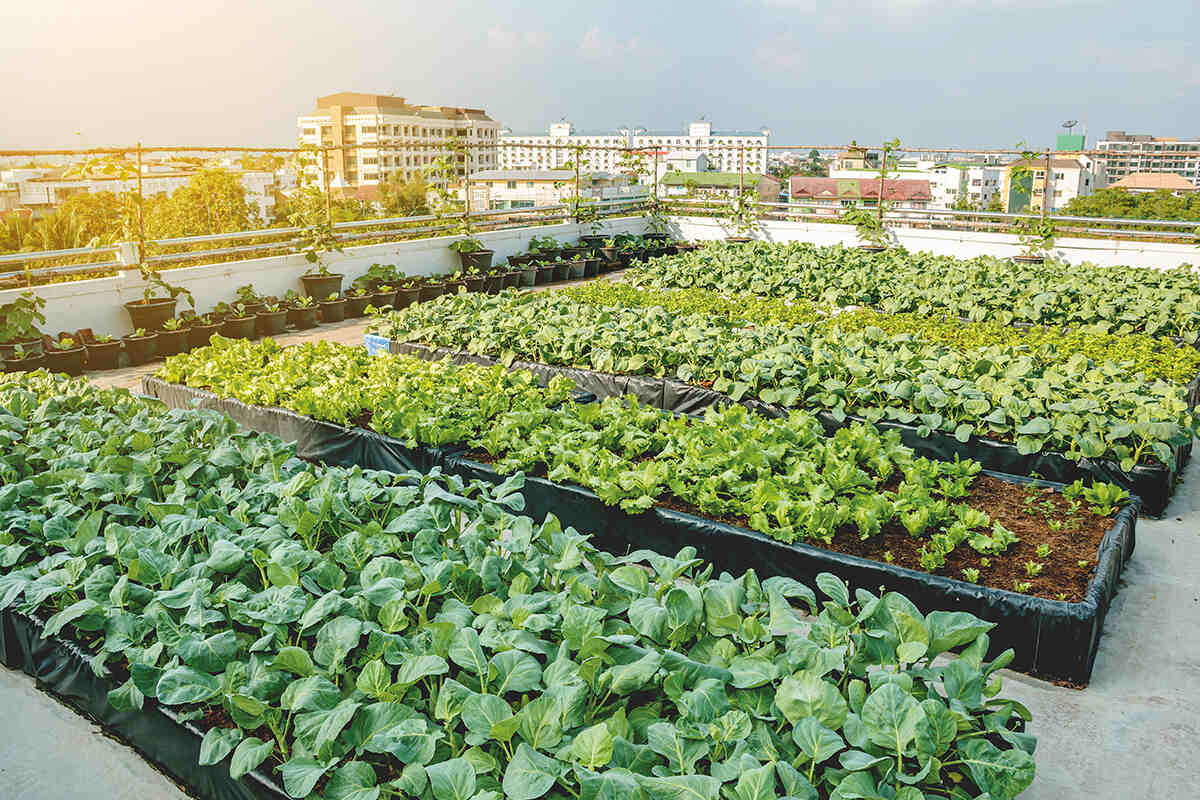
Crops produced by urban farming can have higher yields than conventional ones, but the benefits of urban agriculture go beyond food
By
In 2019, Gotham Greens opened its 9,300-square-metre Baltimore farm on the former site of Bethlehem Steel, once the largest steel-manufacturing plant in the world. It’s one of ten farms the company has established across cities in the USA – three more are in the pipeline – repurposing unused rooftop spaces and derelict factories for food production.
With urban populations projected to increase by 2.5 billion by 2050, urban agriculture could help to feed our growing cities. But despite the rise in city-based farms, Florian Payen says that there’s still a lot we don’t know about them, including the economic and environmental costs.
Payen, an environmental scientist at Lancaster University and lead author of a new study analysing the crop yields of urban farming, says the reality is that ‘urban agriculture in any given city can take lots of different forms, and these forms vary across different cities, countries and continents’. But there’s a lack of the comprehensive data needed for determining whether a project will be profitable and for improving our understanding of whether a city could produce enough food to support itself.
Payen and colleagues looked at previous studies in 53 countries in which crops were grown in a range of different urban environments, including ‘grey’ spaces such as rooftops, and using different growing methods, such as hydroponics. This gave them ‘quite a good global snapshot of urban agriculture,’ he says. They found that yields of urban crops were often the same, if not higher, than those from conventional farms. Just as importantly, the study revealed the types of crops most commonly grown (lettuces and chicories) and which methods are most effective. Surprisingly, they found little difference between indoor and outdoor spaces, but clear differences in the suitability of crops in grey spaces, where vertical farming is often used. ‘A lot of these systems claim that they can grow lettuce from beginning to harvest in about a month, so the yield per year could be huge,’ says Payen, ‘but you can’t stack something like a fruit tree.’
One of the most touted benefits of urban farming is a reduction in food miles, which globally account for three billion tonnes of carbon emissions (nearly 20 per cent of all food-system emissions) annually. However, urban-grown crops aren’t automatically a more environmentally friendly option. In one study, researchers analysed the carbon footprint of different vegetables grown in greenhouses in Canada compared to importing vegetables from the USA. ‘In that example, it was less carbon-intensive to import the crops because of the high energy input required to grow them locally in greenhouses,’ says Payen.
But there are other benefits. Urban agriculture has the potential to enhance local ecosystems, attracting pollinators such as bees and birds that boost urban biodiversity, while providing more green spaces to help keep cities cool and counter the urban heat island effect.
It could also enhance our connection with food and improve the public’s understanding of the natural resources needed to grow fresh produce. More importantly, it could improve urban access to fresh fruit and vegetables, and help insulate individual cities against food shocks from events such as crop failure. ‘Food supply chains can be vulnerable to global issues,’ says Payen. ‘We saw this with Covid and it could happen with climate change, especially extreme-weather events.’




